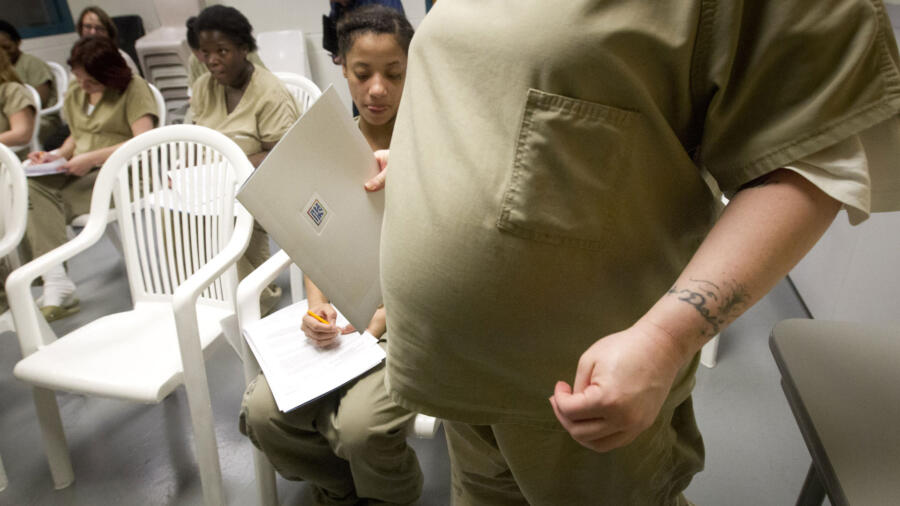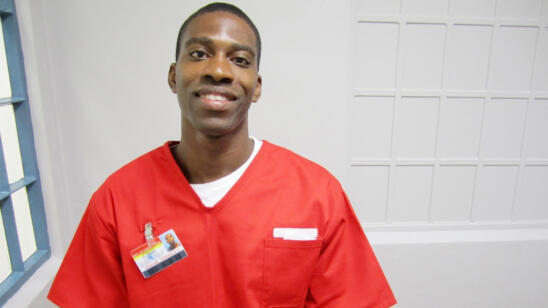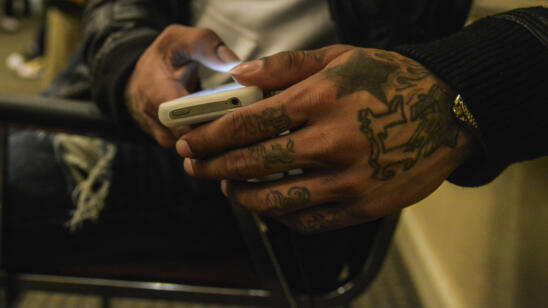In the early hours of July 31, 2018, Diana Sanchez called out for help from her cell in the Denver County Jail. The 26-year-old had told officers she was more than eight months pregnant when they’d booked her two and a half weeks earlier for charges related to identity theft. But when Sanchez told deputies and nurses she was going into labor, they didn’t take her seriously.
Sanchez gave birth alone in her cell while crying out for help. Security camera footage captured the entire ordeal.
The medical care pregnant women receive behind bars varies widely depending on the state, facility and whether the women are in federal custody. Some women, like Sanchez, have given birth alone in their cells. Most receive transportation to a hospital for delivery. Yet because a lot of jails and prisons don’t consistently track pregnancies, it’s hard to say how many incarcerated women give birth, let alone what type of care they receive.
“The utter lack of information about what happens, and the accompanying variability, results in part from the utter lack of standardization and oversight,” says Dr. Carolyn Beth Sufrin, an obstetrician/gynecologist at the Johns Hopkins School of Medicine and author of Jailcare: Finding the Safety Net for Women Behind Bars.
No National Standards Exist
In a first-of-its-kind study published in the American Journal of Public Health in May 2019, Sufrin and her colleagues found that out of a sample of 753 state and federal prison inmates who had live births, all but six delivered in a hospital. Speaking with A&E True Crime, Sufrin explains that most inmate deliveries happen in hospitals “because prisons and jails are not equipped to handle deliveries.” Three of the non-hospital deliveries supposedly happened with prison nurses and paramedics present during rapid labor and delivery. Details weren’t available for the other three.
[Watch Born Behind Bars on A&E Crime Central.]
The experiences documented in the study capture the range of outside medical care that incarcerated pregnant women require. Of the 753 live births, there were three newborn deaths and no maternal deaths, and nearly a third of the live births were Cesarean deliveries. There were also 63 women in the study’s sample whose pregnancies did not end in live birth: 46 had miscarriages, 11 had abortions, four had stillbirths and two had ectopic pregnancies, which can be fatal without expert medical care. The study did not record the women’s races, but the authors note that the incarceration rate for Black women is twice that of white women. (Studies have also shown that stark racial disparities exist within the broader healthcare system.)
Although no national standards of care exist for pregnant women in jails and prisons, state regulations vary. In April 2019, Maryland became the first state to ban prisons from placing pregnant women in solitary confinement, previously something routinely done in the state.
There are also more laws banning officers from shackling or restraining women to prevent them from moving freely during childbirth. Usually, this involves chaining women’s limbs together and/or to the bed while they give birth in a hospital. (It can also happen in jails and prisons, but is less common because of the increased security.) In 2018, the First Step Act prohibited the use of restraints on pregnant women held in federal prisons. In addition, at least 29 states have passed laws prohibiting this practice, though Sufrin notes the laws are not always followed.
Few Post-Partum Options for Maternal Bonding
But what happens after an incarcerated woman gives birth? Again, this varies widely across the country.
At least 11 states and some federal prisons have “prison nursery programs” or “mother-baby units.” These programs allow women to bring their babies back to jail or prison with them after giving birth. The length of time a child can stay varies depending on where a woman is incarcerated. At the South Dakota Women’s Prison in Pierre, it’s 30 days; at the Community Prisoner Mother Program in Pomona, California, it’s up to six years. (The A&E series Born Behind Bars profiles the nursery at the Indiana Women’s Prison.)
Prison nursery programs “facilitate breastfeeding and bonding and the physical contact that’s so essential, especially in the first few days,” Sufrin says. “In order to be in these programs, the moms have to meet pretty strict criteria” that differ between institutions. At the South Dakota Women’s Prison, pregnant women have to take a parenting class to qualify. To join the Community Prisoner Mother Program in California, women must be “non-serious, nonviolent female offenders” with “no active felony holds, nor any prior escapes,” according to the program’s website.
Even if a woman meets these criteria, there still may not be any available spots in a nursery program—and that’s if her institution or state has a nursery program in the first place. For most incarcerated women, leaving the hospital with their baby is not an option.
“In most cases, if the person goes back to the jail or prison after she gives birth, then the baby has to go somewhere else,” Sufrin says. “If she has a trusted person, family member or partner who can care for the baby, then the baby would go with that person.” The mother may be able to breastfeed or pump milk to feed the baby, depending on her facility’s policies and capabilities.
“But in many cases [the mothers] don’t have someone, and then the baby goes into state custody,” Sufrin says. “And whether or not she is able to have contact visits with that baby while she’s postpartum at the prison or jail is highly variable.”
More Features:
Got a Parent in Prison? This Drug Lord’s Son Wants to Help
What Are the Last Days of a 33-Year Prison Sentence Like?
Is There a Minimum Age for Being a Murderer?
What’s It Like to Work an iPhone After Being in Prison for 25 Years?


